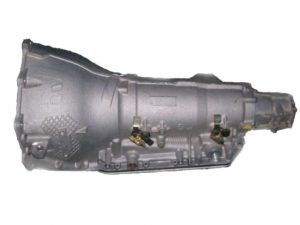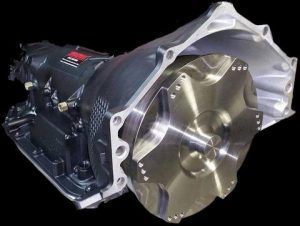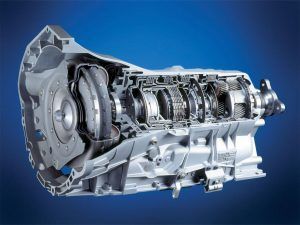Buick Transmissions
Buick Transmissions

Buick is a division of General Motors and is one of the oldest vehicle brands, the first Buick brand vehicle produced in 1899.
Common Problems
Leaks: transmission fluid is vital to the health of your transmission and you should always be on the lookout for leaks. The absence of fluid, or a fluid level that’s too low, can cause problems like overheating and other serious issues. Check the ground where your Buick is usually parked. If you notice puddles or staining underneath your car, usually a reddish color, you may have a transmission fluid leak and this will need attention as soon as possible to prevent further damage.
Fluid: as stated above, transmission fluid is very important. Not only does it act as a coolant to prevent your transmission from overheating, it also acts as a lubricant to keep all the moving parts within your transmission functioning smoothly. Bring your Buick to Eagle Transmission regularly to have the transmission fluid levels and condition checked and changed if needed.
Vibrations: your vehicle should run smoothly so if you notice a hard vibration or shuttering during gear shifts, it’s a sign that there’s an issue with your Buick transmission. If your vehicle is vibrating, bring it in to Eagle Transmission for a thorough diagnosis.
Noises: your vehicle should not make any strange or jarring noises. If it does, it’s a sign that there’s an issue within your transmission. If this happens, bring your vehicle to Eagle Transmission right away. Don’t forget that Eagle Transmission offers free towing with major repairs.
Overheating: overheating is a serious issue that can be caused by a number of issues, such as low transmission fluid, and can also lead to more serious issues down the road. To prevent overheating, we recommend installing a transmission cooler, keeping up with regular maintenance to monitor fluid levels and condition, and limiting strenuous driving such as heavy towing, stop-and-go driving in hot environments, or racing.
But how do you determine exactly what kind of transmission is in your Buick?
A variety of automatic and manual transmissions are used on Buick vehicles. Buicks are usually equipped with a General Motors Buick, Oldsmobile, Pontiac (BOP) transmission. this is basically a Chevrolet transmission tailored to suit the actual necessities of those brands. the best way to determine a Buick transmission requires you to look at the transmission oil pan; manual transmissions have their own visual characteristics.
Step 1
Determine whether or not your transmission is automatic or manual, and if your Buick is front- or rear-wheel drive. Access the transmission if it’s still installed within the vehicle. For rear-wheel-drive vehicles, access the transmission from beneath the driver-side front door. For front-wheel-drive vehicles, the transmission is often placed on the passenger side of the automobile and in front of the right front wheel.
Step 2
Count the amount of oil pan bolts on the bottom of the automatic transmission. For Buick rear-wheel-drive automatics, the TH250/350 RWD contains a 13-bolt oil pan, the TH200 has an 11-bolt oil pan, the TH400 contains a 13-bolt oil pan and the ST300 includes a 14-bolt oil pan. For front-wheel-drive automatics, the 440T4 has nineteen bolts, the 4T60 and TH125 both have sixteen bolts and the TH325 has fifteen oil-pan bolts.
Step 3
Use oil-pan shape to differentiate automatic transmissions with identical bolt count. both the TH250/350 and the TH400 have thirteen bolts, however, the TH250/350 includes a square pan with one angled corner, whereas the TH400 has an irregularly formed pan with a bulge on the passenger side of the transmission. The 4T60 and TH125 each have sixteen bolts, however the 4T60 contains a square pan whereas the TH125 oil pan includes a very irregular shape.
Step 4
Identify your Buick’s manual transmission. Muncie M20/M21/M22 four-speed rear-wheel-drive transmissions have a seven-bolt side cover wherever the shifting linkage connects to the transmission. The Muncie M22 is a larger model, usually installed with high-torque, big-block engines. The GM Saginaw transmission is comparable to the M-Series, but the reverse gear lever is connected to the seven-bolt aspect cowl, whereas the Muncie models have the reverse lever connected to the transmission tail housing. Buick additionally used Isuzu-manufactured manual transmissions. The MR2 could be a front-wheel-drive four-speed with an aluminum case. The MR8 is a five-speed transmission with a seven-bolt tin cover on the rear of the transmission. The HM282 is a five-speed transmission with a nine-bolt rear cover.
For any Buick manual transmission identification, use a Buick transmission application chart like that out there on drivetrain.com.
Tip
The majority of transmissions found on Buick vehicles are automatic; manual transmissions were reserved largely for compact models and Sixties sport-performance models.
The post Buick Transmissions appeared first on
Eagle Transmission North Austin.







